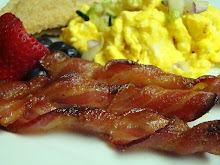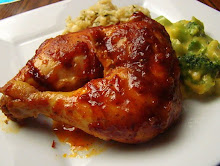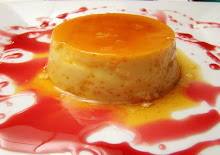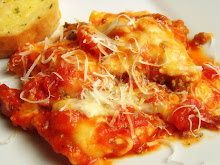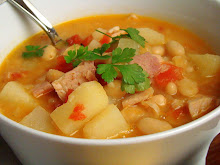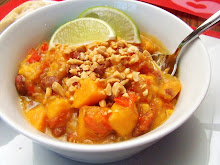Time to use up some leftovers! Honestly, as I type this, I'm pretty sick of turkey. However, I can't bear to let good food go to waste, so I'll be incorporating turkey into a couple of our meals this week. I'm sure I can stomach a little more if it's baked into a delicious pizza or a creamy turkey tetrazzini. So, after a week long break....here is the meal plan for this first week of December.
Monday December 1st
Home-canned Beef with Noodles
Leftover Mashed Potatoes
Leftover Green Bean Casserole
Tuesday December 2nd
Turkey Alfredo Pizza
Wednesday December 3rd
Turkey Tetrazzini
Thursday December 4th
Beef Chow Mein over Rice
Friday December 5th
Make Your Own Pizza Night
Saturday December 6th
Leftover Sloppy Joes (from my freezer)
Sunday December 7th
My Favorite Pork Chops
Au Gratin Potatoes
Grocery List
Produce
Potatoes
garlic
2 packages of mushrooms
celery
onion
Deli/Bread
Pre-baked pizza crust
Meat
1 quart of home canned beef or 2 lbs. cut up beef
5 cups cooked turkey breast
1 lb. ground beef
6 pork chops
Canned Goods
Green beans (if you don't have leftover green bean casserole and want to make it)
Mushroom soup (green bean casserole)
Low-fat Alfredo sauce
lemon juice
chicken broth
sliced water chestnuts
soy sauce
molasses
ketchup
chili sauce
Dry Goods
Egg Noodles
French fried onions (green bean casserole)
brown sugar
beef bouillon
cornstarch
rice
Spices
ground mustard
red pepper flakes
pepper
garlic powder
Dairy
Milk
Shredded Parmesan
Light cream cheese
butter
shredded cheddar
Freezer
Chopped spinach
peas
Sunday, November 30, 2008
Saturday, November 29, 2008
Beef. It's What's For Dinner: A Guide to Preservation
Last week, I travelled to my home town to assist with my family's annual beef canning effort. I fully expected to make this post on beef canning days ago. However, by the time I made the 5 hour trip home, unpacked, cleaned the house, cooked and baked for Thanksgiving, entertained 9 guests this weekend and nursed my baby through a bout of the flu…I never found the time to sit down and type.
Now I’m back and happy to enlighten you on the beef home canning process. I get a lot of skeptical looks when I tell my friends that I “can” beef. I get it. I personally don’t seek out recipes that require meat from a can. Ewww. Most meat in a can reminds me of dog chow. Not appetizing. However, this is completely different. The pressure canning process used to preserve beef in jars makes the meat tender and perfect for stew, beef and noodles, stronganoff, or other beef-based dishes. I use a jar of this delicious beef about twice a month.
Just to let you know the enormity of this project, I’ll give you some stats. We began with about 240 pounds of beef. After it was trimmed of fat, cut up, packed into jars and pressure cooked we ended up with 90 quart and 35 pint of beef . The first day it was just my grandma and I. We worked for 4-5 hours and put up 29 quart of beef. Some people might think, “what a pain”. But honestly, I enjoyed the work and the company. How often do I have 4 or 5 hours to just sit and talk to my grandma? No interruptions, no television, no distractions. Just time to catch up with one of my favorite people. I consider that time a gift. On the second day, we began mid-morning and wrapped up well into the evening. We had much more help. My mom and my two sisters, my uncle and his friend, and my great-grandpa were all part of the beef canning team. Aside from the actual time that beef processes in the canner, the trimming of the beef takes the most time. So, we had 4-5 people trimming, one person packing jars and one person manning the canners. Again, sure, it was work, but it was fun too. This project provided a chance to spend time with my family in my often too-busy-life. And...when we finish, we celebrate. Who doesn’t like a party?
Let me walk you through a day of canning beef.
Start with clean jars. It doesn’t matter what kind. Wide, narrow, quart, pint…whatever your preference.

You also need rings to fit your jars

And pressure canners. The big one on the left will hold 16 quart at a time, the other two will fit 7 quart or 10 pint. So, potentially we could do 20 quart at a time. Unfortunately, the canners are so large that only two can sit on the stove top at the same time. That means the third was either cooling or being filled while the other two processed.

Salt. This is canning salt, but regular old table salt would work fine too.

Lids. We heat the lids before placing them atop the top of the jars that have been wiped clean of any debris that results from packing the jars. Then tightly screw down the canning rings.

And of course, beef. Talk about knowing where your food comes from…this beef was raised by my grandpa. The pasture is right outside the window from where we canned it.

Here, my grandma starts by trimming any excess fat from the pieces of meat and cutting any pieces that are too large into a more manageable size.

This was my "special job". I guess you regress a little when you are in the company of people that witnessed your first steps. I took the trimmed meat and packed it into the jars as tightly as possible. Fill to the neck of the jar to leave a little room above the meat. Rookie canners- that’s called headspace.This space is needed for expansion of food as jars are processed, and for forming vacuums in cooled jars. The extent of expansion is determined by the air content in the food and by the processing temperature. Air expands greatly when heated to high temperatures; the higher the temperature, the greater the expansion. Foods expand less than air when heated. This is why you must leave more headspace when using a pressure canner.

Once the jars are filled they look a little bit like they belong in a science museum exhibit…or a serial killer’s basement. But don’t worry, the meat cooks and it’s all good.

Now each jar gets a teaspoon of salt

And a tablespoon of water

Then into the canner. I add water to the canner until it reaches about halfway up the side of the jars.

After you screw down the lid clamps of the pressure canner as tightly as possible (in the same manner that you tighten the lug nuts on your tires, in opposite pairs) heat the canner until steam is shooting out of the canner’s vent pipe. Once you flip down the vent pipe, pressure begins to build inside of the canner. Watch the gauge. Once the pressure reaches 10, you will want to stabilize the pressure by adjusting the stove’s burner temperature. Quarts of beef need to remain at 10 pounds of pressure for 90 minutes. Pints remain at 10 pounds of pressure for 75 minutes.

Here are some pictures of the trimmers. That’s my 93 year old great-grandpa on the right.




Lunch Break. This is what beef canners eat. Wong's fabulous Cantonese cuisine.

And a couple of hours later with all of the beef trimmed and packed into jars, we did what any group of people that have just been up to their elbows in 240 pounds of fresh beef might do…we celebrate with a champagne toast. Cheers!


Now, with a year worth of canned beef on my shelf, I incorporate this pantry staple into my meal plan. Check out this 20 minute beef stew.
Now I’m back and happy to enlighten you on the beef home canning process. I get a lot of skeptical looks when I tell my friends that I “can” beef. I get it. I personally don’t seek out recipes that require meat from a can. Ewww. Most meat in a can reminds me of dog chow. Not appetizing. However, this is completely different. The pressure canning process used to preserve beef in jars makes the meat tender and perfect for stew, beef and noodles, stronganoff, or other beef-based dishes. I use a jar of this delicious beef about twice a month.
Just to let you know the enormity of this project, I’ll give you some stats. We began with about 240 pounds of beef. After it was trimmed of fat, cut up, packed into jars and pressure cooked we ended up with 90 quart and 35 pint of beef . The first day it was just my grandma and I. We worked for 4-5 hours and put up 29 quart of beef. Some people might think, “what a pain”. But honestly, I enjoyed the work and the company. How often do I have 4 or 5 hours to just sit and talk to my grandma? No interruptions, no television, no distractions. Just time to catch up with one of my favorite people. I consider that time a gift. On the second day, we began mid-morning and wrapped up well into the evening. We had much more help. My mom and my two sisters, my uncle and his friend, and my great-grandpa were all part of the beef canning team. Aside from the actual time that beef processes in the canner, the trimming of the beef takes the most time. So, we had 4-5 people trimming, one person packing jars and one person manning the canners. Again, sure, it was work, but it was fun too. This project provided a chance to spend time with my family in my often too-busy-life. And...when we finish, we celebrate. Who doesn’t like a party?
Let me walk you through a day of canning beef.
Start with clean jars. It doesn’t matter what kind. Wide, narrow, quart, pint…whatever your preference.

You also need rings to fit your jars

And pressure canners. The big one on the left will hold 16 quart at a time, the other two will fit 7 quart or 10 pint. So, potentially we could do 20 quart at a time. Unfortunately, the canners are so large that only two can sit on the stove top at the same time. That means the third was either cooling or being filled while the other two processed.

Salt. This is canning salt, but regular old table salt would work fine too.

Lids. We heat the lids before placing them atop the top of the jars that have been wiped clean of any debris that results from packing the jars. Then tightly screw down the canning rings.

And of course, beef. Talk about knowing where your food comes from…this beef was raised by my grandpa. The pasture is right outside the window from where we canned it.

Here, my grandma starts by trimming any excess fat from the pieces of meat and cutting any pieces that are too large into a more manageable size.

This was my "special job". I guess you regress a little when you are in the company of people that witnessed your first steps. I took the trimmed meat and packed it into the jars as tightly as possible. Fill to the neck of the jar to leave a little room above the meat. Rookie canners- that’s called headspace.This space is needed for expansion of food as jars are processed, and for forming vacuums in cooled jars. The extent of expansion is determined by the air content in the food and by the processing temperature. Air expands greatly when heated to high temperatures; the higher the temperature, the greater the expansion. Foods expand less than air when heated. This is why you must leave more headspace when using a pressure canner.

Once the jars are filled they look a little bit like they belong in a science museum exhibit…or a serial killer’s basement. But don’t worry, the meat cooks and it’s all good.

Now each jar gets a teaspoon of salt

And a tablespoon of water

Then into the canner. I add water to the canner until it reaches about halfway up the side of the jars.

After you screw down the lid clamps of the pressure canner as tightly as possible (in the same manner that you tighten the lug nuts on your tires, in opposite pairs) heat the canner until steam is shooting out of the canner’s vent pipe. Once you flip down the vent pipe, pressure begins to build inside of the canner. Watch the gauge. Once the pressure reaches 10, you will want to stabilize the pressure by adjusting the stove’s burner temperature. Quarts of beef need to remain at 10 pounds of pressure for 90 minutes. Pints remain at 10 pounds of pressure for 75 minutes.

Here are some pictures of the trimmers. That’s my 93 year old great-grandpa on the right.




Lunch Break. This is what beef canners eat. Wong's fabulous Cantonese cuisine.

And a couple of hours later with all of the beef trimmed and packed into jars, we did what any group of people that have just been up to their elbows in 240 pounds of fresh beef might do…we celebrate with a champagne toast. Cheers!


Now, with a year worth of canned beef on my shelf, I incorporate this pantry staple into my meal plan. Check out this 20 minute beef stew.
Saturday, November 22, 2008
The Meal Plan Takes a Thanksgiving Break
This week my meal plan is suspended due to travel and my preparation for the upcoming Thanksgiving feast. I am currently out of town and canning 150 lbs of beef. When I return home on Monday, my focus will not be a daily meal plan, but rather cleaning and cooking and baking for my guests who will be arriving on Thursday. If I had to guess, this week my family will probably use up a restaurant gift card, eat defrosted sloppy joes and maybe even have Easy Mac or Hamburger Helper while I prepare to hostess Thanksgiving.
Keep checking in this week, though. I will be posting. First about my beef canning trip over the weekend and then the pictures and recipes for the dishes I am preparing for Thanksgiving. Next week, the meal plan returns...possibly with ways to use up all of that leftover turkey!
If you're hosting Thanksgiving, what's on the menu?
If you're going to a Thanksgiving dinner, what are you taking?
My dad requested Beef Wellington, Lobster, and Chocolate Raspberry Cheesecake...but I think I'll stick to the traditional.
Here's my menu:
Turkey-obviously.
Stuffing-which I don't actually stuff into anything, but bake separately.
Mashed Potatoes
Gravy
Green Bean or Broccoli Casserole
Baked Corn Casserole
Sweet Potato Casserole-my personal favorite
Rolls with Butter and Jam
Wow, that's a lot of casserole!
For dessert:
Pumpkin Swirl Cheesecake
Peanut Butter Pie
Grandma's Cherry Pie
Good luck with your holiday preparations!
If you are still planning your meals this week, don't forget my guide to meal planning!
Keep checking in this week, though. I will be posting. First about my beef canning trip over the weekend and then the pictures and recipes for the dishes I am preparing for Thanksgiving. Next week, the meal plan returns...possibly with ways to use up all of that leftover turkey!
If you're hosting Thanksgiving, what's on the menu?
If you're going to a Thanksgiving dinner, what are you taking?
My dad requested Beef Wellington, Lobster, and Chocolate Raspberry Cheesecake...but I think I'll stick to the traditional.
Here's my menu:
Turkey-obviously.
Stuffing-which I don't actually stuff into anything, but bake separately.
Mashed Potatoes
Gravy
Green Bean or Broccoli Casserole
Baked Corn Casserole
Sweet Potato Casserole-my personal favorite
Rolls with Butter and Jam
Wow, that's a lot of casserole!
For dessert:
Pumpkin Swirl Cheesecake
Peanut Butter Pie
Grandma's Cherry Pie
Good luck with your holiday preparations!
If you are still planning your meals this week, don't forget my guide to meal planning!
Sunday Dinner: Breakfast

It's omelet time! You've gotta love breakfast for dinner every once in a while.
Just like with quesadillas, when I make omelets I like to pull out everything from the refrigerator that will work. Tonight in my omelet: ham, onion, mushrooms, leftover, cooked asparagus, and American cheese. In my husband's I swapped the asparagus(he's not a fan) for green chilies(they go better with the hot sauce he pours on just about everything), and the kids just had ham and cheese in theirs. Notice a theme in some of my meals? Foods that you can personalize. Pizza, quesadillas, potato bar, and now the omelet.
I like to begin by sauteing the onions and then toss in the other filling ingredients to heat them up.

Now I crack 2-3 eggs into a bowl and add a little milk. Beat with a whisk or fork.

Heat an omelet pan, coating the bottom of the pan with a healthy oil or butter. Then pour the eggs into the hot pan, tilting or shaking the pan so the egg mixture spreads evenly. I removed the heated filling ingredients from this pan before pouring in the egg. For a simpler version, you could just pour the egg over the ham, onions, mushroom, or whatever you have in your skillet.

Next, use a spatula to lift the cooked edges of the omelet toward the center of the pan, and then tilt or shake the pan until the runny egg mixture fills up the gap again. Quickly repeat this step until there’s no longer enough egg mixture liquid to fill the gap.

Now put the the fillings of your choice onto the omelet

If desired, top with cheese. Use your favorite. American, cheddar, provolone...or go Greek and try feta.

Finally, gently loosen the edges of your omelet, fold the omelet in half....

and slide it onto a plate. I cut up leftover baked potatoes and pan fried them with sliced onions for hash browns. I also browned some sausage links to complete our "breakfast for dinner" Sunday supper.

Thursday, November 20, 2008
Orange Pepper Steak
A little bit of trivia about me: I have moved 4 times in the last four years. After the unpacking is complete (or sometimes during the unpacking process) one of my goals is to find the most quality and affordable, strip mall Asian cuisine take-out establishment within a 5 mile radius. A personal menu favorite: Orange Peel Beef. Done correctly, it has that fresh citrus flavor, a little heat to keep it interesting, and the texture and substance of the beef I was raised on. So, as I perused an old issue of Kraft Food and Family, this recipe caught my eye. Not sure why I overlooked it before...
You begin by creating the marinade for a sirloin steak. Start out with 1/2 cup of Catalina dressing.

Now grate the peel off of a medium size orange. Add the peel to the dressing and then squeeze the juice from the orange into the marinade as well. This proved, unexpectedly, to be my favorite step. A little more trivia about me...I had the privilege of knowing my great-grandparents into my adulthood. As a matter of fact, my great-grandfather is still alive and living independently. Pretty amazing, huh? When I was a kid, my great-grandparents wintered in Florida and worked in an orange grove. They shipped boxes of fresh Florida citrus to our family throughout the winter. All types of oranges, tangerines, grapefruit. Probably why I crave grapefruit on snowy mornings to this day. Winter = citrus fruit. Didn't any of you ever get a Christmas orange from Santa? Still with me? Okay. So, here is why the grating and juicing of the orange was my favorite step in this recipe. Today, at the same time the invigorating citrus aroma hit the air while I grated and squeezed...big, beautiful snowflakes gracefully fell outside of my kitchen window. These two simultaneous events conjured a feeling of nostalgia so powerful that for a few moments... I was a kid again. All cozy and warm on a winter morning, gazing out the window of my mom's kitchen. Completely content. Don't you just love those moments?



Now just add 2 chopped green onions, some garlic powder, and of course, pepper. Then give it a good stir. Be sure to reserve 1/4 cup of the marinade to serve with the steak before you add the uncooked meat to the dish.


Now place the steak in the marinade and turn to coat. Cover and put it in the refrigerator to marinate for at least an hour. I marinated mine for four hours.

When you're ready, place the steak on the rack of a broiling pan and broil 2-3 inches from the heat source for about 8 minutes on each side.

I also cooked a little brown rice in beef broth to serve with the steak. So while the steak was broiling, I sauteed some chopped green onion and mushrooms. Then I added them to the rice and sprinkled with some parsley.



When the steak was ready, I cut it into strips and topped it with the reserved marinade. I served this flavorful sirloin with the rice and some asparagus.

So there you have it, Thursday dinner and a little trivia on me. Enjoy!
Here's the recipe from Kraft:
Orange Pepper Steak
Prep Time:
5 min Total Time:1 hr 21 min Makes:8 servings
What You Need:
1/2 cup KRAFT CATALINA Dressing
Grated peel and juice from 1 medium orange
2 green onions, chopped
1/2 tsp. pepper
1/2 tsp. garlic salt
1 boneless beef sirloin steak (2 lb.)
Make It
MIX dressing, orange peel, orange juice, onions, pepper and garlic salt in large shallow dish until well blended. Remove 1/4 cup of the dressing mixture; set aside for later use.
ADD steak to remaining dressing mixture; turn to evenly coat both sides. Refrigerate at least 1 hour to marinate.
PREHEAT broiler. Drain steak; discard marinade. Place steak on rack of broiler pan. Broil, 2 to 3 inches from heat source, 8 min. on each side for medium doneness (160°F). Cut steak into 8 pieces. Serve with reserved 1/4 cup dressing mixture.
Wednesday, November 19, 2008
Quesadillas
I like quesadillas because they are so simple. If you've got two tortillas and some cheese in your house, then you've got the makings of a quesadilla.



I made the quesadilla above on an actual quesadilla maker. It's one of those needless kitchen appliances that take up way too much cupboard space and I only haul it out every 3 months. I think I bought it for my husband way back when we were still dating. You know, because he cooks so much. Ha! He actually does really like quesadillas. I'm just not sure I've ever seen him cook one. The point being, you really don't need a quesadilla maker. You can make them in a regular skillet. See...

Just don't take a phone call and forget to flip...

Usually, when I make quesadillas, I drag everything out of the refrigerator that looks like it might work between two tortillas and create as I go. No meat in these, but they would be yummy with a little chicken or sliced, marinated steak. Here is everything that I dragged out this time.

I always have onions, so I caramelized some onions.


And then I sliced and sauteed some mushrooms.

I put them on the tortilla with some Mexican blend shredded cheese. It was good!

I made this one with cheddar, chopped green chilies, and diced onion.

When you're ready to serve, set out some shredded lettuce, diced tomatoes, salsa, sour cream, guacamole...whatever you like on a quesadilla. I served mine with refried beans topped with cheddar and chopped onion.




I made the quesadilla above on an actual quesadilla maker. It's one of those needless kitchen appliances that take up way too much cupboard space and I only haul it out every 3 months. I think I bought it for my husband way back when we were still dating. You know, because he cooks so much. Ha! He actually does really like quesadillas. I'm just not sure I've ever seen him cook one. The point being, you really don't need a quesadilla maker. You can make them in a regular skillet. See...

Just don't take a phone call and forget to flip...

Usually, when I make quesadillas, I drag everything out of the refrigerator that looks like it might work between two tortillas and create as I go. No meat in these, but they would be yummy with a little chicken or sliced, marinated steak. Here is everything that I dragged out this time.

I always have onions, so I caramelized some onions.


And then I sliced and sauteed some mushrooms.

I put them on the tortilla with some Mexican blend shredded cheese. It was good!

I made this one with cheddar, chopped green chilies, and diced onion.

When you're ready to serve, set out some shredded lettuce, diced tomatoes, salsa, sour cream, guacamole...whatever you like on a quesadilla. I served mine with refried beans topped with cheddar and chopped onion.

Subscribe to:
Comments (Atom)












